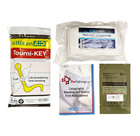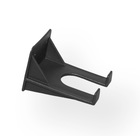Weaver fish
Unlock This Video Now for FREE
This video is normally available to paying customers.
You may unlock this video for FREE. Enter your email address for instant access AND to receive ongoing updates and special discounts related to this topic.
Weaver Fish: Dangers, Prevention, and First Aid for Stings
Weaver fish are small yet dangerous fish commonly found in British coastal waters, particularly from late spring to early autumn. Despite their size, these fish pose a significant threat to beachgoers, fishermen, and even dogs due to their venomous spines.
Habitat of Weaver Fish
Weaver fish typically inhabit shallow waters, often burying themselves in sandy or muddy seabeds close to the shore. This behaviour makes them a hidden hazard in popular bathing and paddling areas, especially during the busy summer months.
Increased Risk at Low Tide
The risk of encountering a weaver fish increases during low tide, as the receding water leaves them more exposed. Swimmers and waders are more likely to step on these fish unknowingly during this time.
Symptoms of a Weaver Fish Sting
Being stung by a weaver fish results in immediate and intense pain, often described as a sharp, burning sensation. The pain can spread from the sting site, accompanied by swelling and redness. In some cases, more severe symptoms such as dizziness, nausea, or difficulty breathing may occur.
First Aid for Weaver Fish Stings
Step 1: Immersion in Hot Water
Immediately immerse the affected area in hot water (not scalding) for 30 to 90 minutes. The heat helps to neutralise the venom, reducing pain and swelling. Ensure the water is as hot as the person can tolerate without causing burns.
Step 2: Pain Relief
Over-the-counter painkillers such as ibuprofen or paracetamol can help manage the pain. Follow the dosage instructions carefully.
Step 3: Cleaning the Wound
After soaking, thoroughly clean the wound and apply an antiseptic to prevent infection. If symptoms persist or worsen, seek medical advice promptly.
Prevention of Weaver Fish Stings
Wear Protective Footwear
Wearing sturdy water shoes or sandals when walking in shallow waters can provide a barrier against the fish’s venomous spines.
Shuffle Your Feet
When walking in water, shuffle your feet rather than stepping normally. This movement can scare the fish away before you accidentally step on them.
Be Aware of Known Areas
Exercise caution in areas known to have weaver fish, especially during low tide and in sandy or muddy-bottomed waters.
Weaver Fish Stings in Dogs
Yes, dogs can also be stung by weaver fish, particularly if they enjoy playing in shallow waters or digging in the sand. The symptoms in dogs are similar to those in humans, including pain, swelling, and distress.
First Aid for Dogs
If your dog is stung by a weaver fish, apply the same first aid principles:
- Immerse the affected area in warm water (as hot as the dog can tolerate without harm).
- Seek veterinary care promptly, especially if the dog appears to be in significant distress.
Conclusion: Awareness and Precaution
While weaver fish are a hidden danger in British coastal waters, awareness and simple precautions can help avoid painful encounters for both humans and dogs. By taking these steps, you can enjoy the beach safely during the warmer months.







_-Trauma_10x10_CE.jpg)